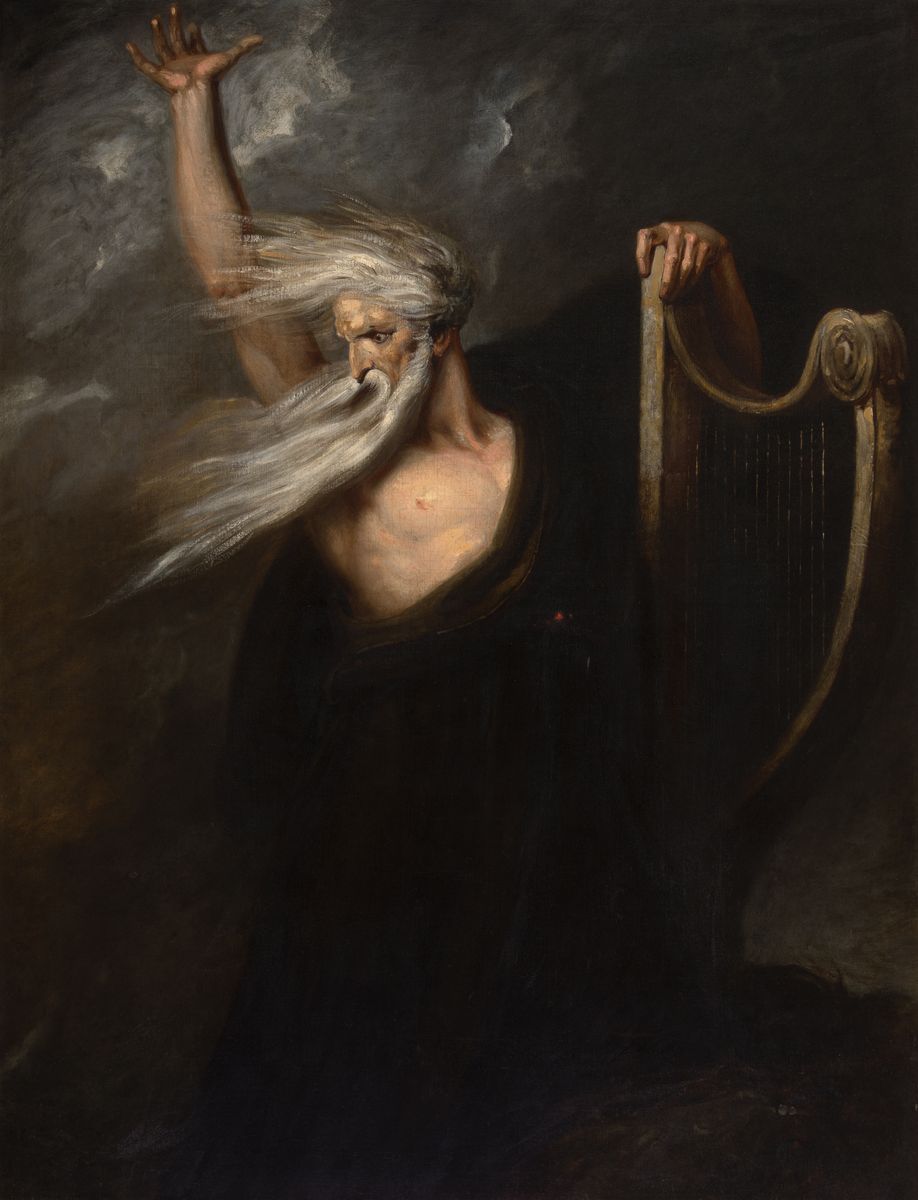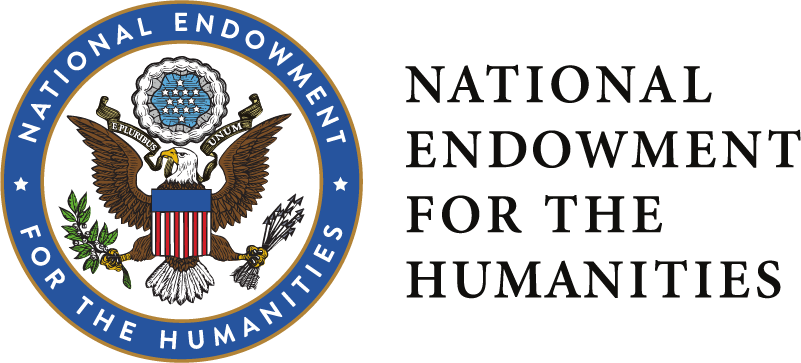The Bard
Artist:
Richard Westall
(British, 1765 - 1836)
Culture: English
Date: ca. 1798
Medium: Oil on canvas
Dimensions:
77 1/2 x 60 in. (196.9 x 152.4 cm)
Credit Line: San Antonio Museum of Art, gift of Gilbert M. Denman, Jr.
Object number: 80.174
Signed: Unsigned
Provenance: sold, Christie's, London, Nov. 22, 1968, lot 5; sold, Christie's, London, June 20, 1969, lot 1; sold, Christie's, London, Nov. 19, 1970, lot 3; with Spencer A. Samuels & Company, New York, by 1972; sold by Spencer A. Samuels & Company, New York, to Gilbert M. Denman, Jr. (1921-2004), San Antonio, 1973; Gilbert M. Denman, Jr., by gift to San Antonio Museum of Art, 1980
Label Text
Culture conflicts with politics in this scene illustrating part of The Bard, an eighteenth-century British poem by Thomas Gray. According to Gray’s verses, when the English King Edward I conquered Wales in the thirteenth century, his armies massacred all lyrical poets, or bards, whose words might have encouraged rebellion against the invaders. The painting closely follows Gray’s description of the endangered Welsh poet cursing the English king. The stormy background matches the Bard’s ferociously animated hair, beard, and body language:
Rob’d in the sable garb of woe,
With haggard eyes the Poet stood;
(Loose his beard, and hoary hair
Stream’d, like a meteor, to the troubled air), And with the master’s hand, and prophet’s fire, Struck the deep sorrows of his lyre
At the turn of the nineteenth century, several artists interpreted this subject for a public eager for dramatic scenes from British literature and history. Great Britain’s increasing dominance as a military power helped stimulate artistic patriotism. Richard Westall was uniquely suited to create such works. He spent much of his career illustrating publications of British literature, in addition to making large-scale oil paintings.
--William Keyse Rudolph, 2018
Rob’d in the sable garb of woe,
With haggard eyes the Poet stood;
(Loose his beard, and hoary hair
Stream’d, like a meteor, to the troubled air), And with the master’s hand, and prophet’s fire, Struck the deep sorrows of his lyre
At the turn of the nineteenth century, several artists interpreted this subject for a public eager for dramatic scenes from British literature and history. Great Britain’s increasing dominance as a military power helped stimulate artistic patriotism. Richard Westall was uniquely suited to create such works. He spent much of his career illustrating publications of British literature, in addition to making large-scale oil paintings.
--William Keyse Rudolph, 2018
Not on view
In Collection(s)
The San Antonio Museum of Art is in the process of digitizing its permanent collection. This electronic record was created from historic documentation that does not necessarily reflect SAMA's complete or current knowledge about the object. Review and updating of such records is ongoing.




 This resource has been made possible in part by the National Endowment for the Humanities: Exploring the Human Endeavor.
This resource has been made possible in part by the National Endowment for the Humanities: Exploring the Human Endeavor.
